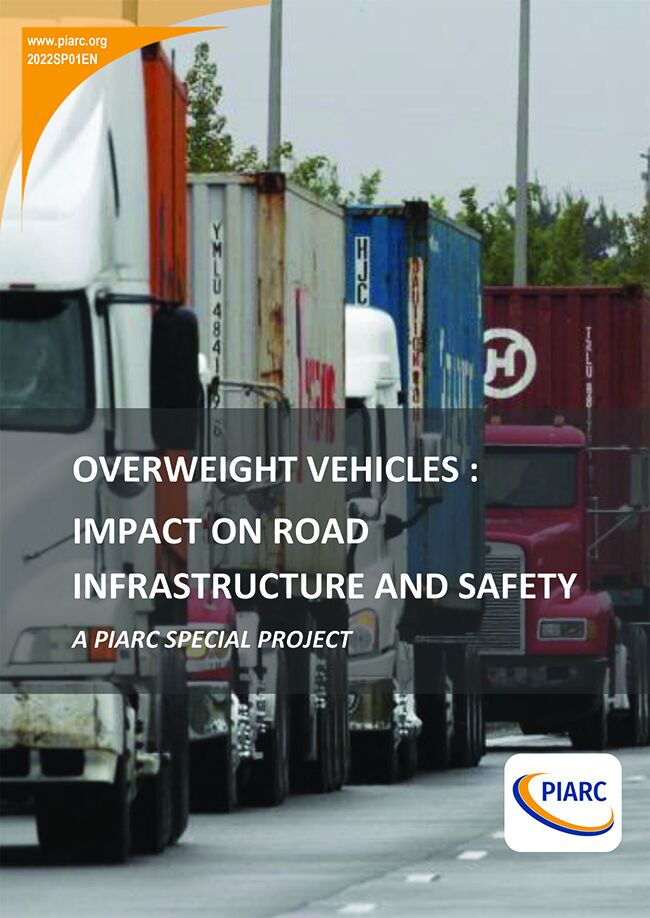Overweight Vehicles: Impact On Road Infrastructure And Safety

This report compiled the available information on overweight road freight vehicles around the world, the impacts they have on road infrastructure, road safety and the economic position of road infrastructure managers, and collected global best practices to prevent and mitigate overloading.
Global experience
Weight limits for road freight vehicles typically cover 2 aspects: gross vehicle weight and axle (set) load.
Gross vehicle weights differ greatly between countries and continents, from as low as 36 tonnes to as high as 130 tonnes (or more with special permits). Higher weight limits are generally set in countries that aim to maximise the potential of their fleet, though motives for this may vary: in developed countries, the aim is to maximise productivity and reduce costs, while in developing countries, it may be more about meeting demand with existing fleet, as new vehicles may not be purchased easily.
While overloading may save costs for road transport operators, the consequences of overloading can be immense.
Effects on pavements
The effect of overloading on the pavement residual life depends on different factors such as type of traffic, load distribution, vehicle wheel and suspension and also on type of pavement and its condition, thickness, unevenness, cracking etc.
Effects on bridges
Bridges are quite complex structures, the response of the structure and its elements could be different when there is an overload of individual axles, groups of axles, full vehicles or groups of vehicles, depending on the span length and spatial sensitivity to the loading cases. The effects of overloads also depend on the materials used, on the parts of the bridges (sub-structures), on the bridge design, and on the combination of traffic loads with other actions.
Effects on road safety
Indirectly, overloading of HGVs will reduce the safety of all road users if it results in degradation of the road surface that is not compensated by more frequent maintenance. Directly, it influences the safety performance of the overloaded vehicles in a wide variety of, sometimes complex, ways. Rollover stability and the severity of collisions with other heavy vehicles or rigid objects will always be adversely affected. Braking, steering, handling, load security, and the risk of structural failure may all be adversely affected, depending on exact vehicle specifications, configurations and the magnitude and distribution of the overload. Importantly, not all drivers of overloaded vehicles will experience all these effects in normal driving, which risks driver complacency.
Information sheet
- Date: 2022
- Author(s): PIARC
- Domain(s): Risk Management / Road Network Operations / Road Pavements / Road Bridges
- Type: 2022SP01EN - PIARC Special Project
- PIARC Ref.: 2022SP01
- ISBN: 978-2-84060-674-1
- Number of pages: 139